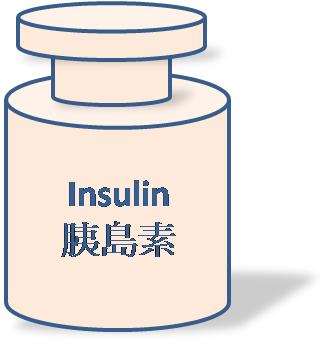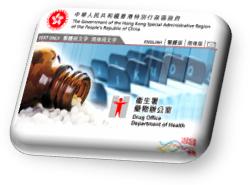Information on diabetic medications
Preface
 Diabetes mellitus is a chronic disorder characterized by an elevated blood glucose level resulting from insulin deficiency, insulin resistance or both. Insulin is a hormone that is secreted by the pancreas to control the blood glucose level. Persistent high blood glucose levels will lead to various complications such as blindness, kidney failure, heart disease, stroke and persistent infection of wounds (especially at the feet) that may result in amputation, etc. Diabetes mellitus is a chronic disorder characterized by an elevated blood glucose level resulting from insulin deficiency, insulin resistance or both. Insulin is a hormone that is secreted by the pancreas to control the blood glucose level. Persistent high blood glucose levels will lead to various complications such as blindness, kidney failure, heart disease, stroke and persistent infection of wounds (especially at the feet) that may result in amputation, etc.
Currently, there is no cure for diabetes. Therefore, patients should adhere to the treatment plan as prescribed by their doctor to control the disease and prevent its complications.
|
Diabetic Medications
As either high or low blood glucose level can lead to serious health consequences, and different drugs used in diabetes have their unique properties, patients should strictly follow the dosage and administration instructions as prescribed by their doctors. Most of the drugs used in diabetes are classified as prescription-only medicines in Hong Kong. Diabetic medications can be broadly classified into two categories, namely insulin injections and non-insulin antidiabetic drugs.
(I) Insulin Injections
 Insulin injection lowers blood glucose level by supplementing the insulin in diabetic patients. Insulin cannot be taken orally as it would be degraded in the stomach. Insulin injection is usually classified by its onset of action and duration of efficacy:
Insulin injection lowers blood glucose level by supplementing the insulin in diabetic patients. Insulin cannot be taken orally as it would be degraded in the stomach. Insulin injection is usually classified by its onset of action and duration of efficacy:
|
Type of insulin injections
|
Precautions*
|
|
Rapid-acting
e.g. Apidra, Humalog, NovoRapid
|
- Inspect your medication every time before each use. The solution should be clear and colourless. Do not use it if it appears cloudy.
|
|
Short-acting
e.g. Actrapid, Humulin R
|
|
Intermediate-acting
e.g. Humulin N, Protaphane
|
- Insulin suspension for injection:
- Just before use, mix your medication well. In case of vial, roll it between the palms gently; or, in case of penfill cartridge, turn it up and down for at least 10 times until the solution disperses uniformly.
- Inspect your medication every time before each use. The solution should appear uniformly cloudy after gentle rolling or turning. Do not use the medication if it does not appear uniformly cloudy or if clumps are present.
- Avoid vigorous shaking and generation of bubbles.
- Insulin solution for injection:
The solution should be clear and colourless. Do not use it if it appears cloudy.
|
|
Premixed
e.g. Humalog Mix, Humulin 70/30, Mixtard, Novomix, Ryzodeg
|
|
Long-acting
e.g. Lantus, Levemir, Toujeo, Tresiba
|
- Inspect your medication every time before each use. The solution should be clear and colourless. Do not use it if it appears cloudy.
|
|
Long acting + Glucagon-like peptide-1 (GLP-1) receptor agonist
e.g. Soliqua, Xultophy
|
- Inspect your medication every time before each use. The solution should be clear and colourless. Do not use it if it appears cloudy.
|
|
Remarks for using insulin injection*
- Insulin injections are available in vials, penfill cartridges, and pre-filled pens. As they have different administration precautions and techniques, patient should consult healthcare professionals on the correct way of administration.
- As the absorption rate of insulin differs in different parts of the body, only inject the insulin according to the sites recommended by the healthcare professionals.
- Patients using insulin injection should monitor the blood glucose regularly as instructed by healthcare professionals. If low blood glucose is noted, take sugar-containing food immediately.
- Never share the injection device, needle or syringe with others.
|
|
Storage requirements for insulin injection*
- Unopened insulin should be stored at 2-8°C in a refrigerator.
- Patient should mark the seal opening date as reference on the vial, pre-filled pen, or penfill cartridge of insulin. Check the date marked every time before administration, and do not use it after the in-use shelf life as stated on the product after opening. Patients should follow the instructions from healthcare professionals or the storage and shelf-life information (before and after opening) as stated on the label.
- Patients should not store the insulin at a high temperature, such as inside a car or too close to the body, as insulin will denature under high temperature.
|
|

(II) Non-Insulin Antidiabetic Drugs
There are different types of non-insulin antidiabetic drugs which lower blood glucose via different pharmacological action. Therefore, they are associated with different side effects and handling precautions.
|
Medicine
|
Common side effects*
|
Precautions*
|
|
Alpha glucosidases inhibitors e.g. acarbose
|
Gastrointestinal discomfort, diarrhoea
|
Contraindicated in patients with inflammatory bowel disease, disorders of digestion or absorption, or in patients predisposed to intestinal obstruction.
|
|
Biguanides
e.g. metformin
|
Nausea, vomiting, bloating, diarrhoea, vitamin B12 deficiency
|
Do not drink alcohol while taking biguanides to avoid the risk of lactic acidosis.
For Metformin:
- - Metformin may reduce vitamin B12 serum levels.
-
- - GFR (glomerular filtration rate) should be assessed before initiation of treatment with metformin-containing products and at least annually thereafter. In patients at an increased risk of further progression of renal impairment and in the elderly, renal function should be assessed more frequently, e.g. every 3-6 months.
-
- - Intravascular administration of iodinated contrast agents may lead to contrast induced nephropathy, resulting in metformin accumulation and an increased risk of lactic acidosis. Metformin should be discontinued prior to or at the time of the imaging procedure and not restarted until at least 48 hours after, provided that renal function has been re-evaluated and found to be stable.
|
|
Dipeptidylpeptidase-4 (DDP-4) inhibitors
e.g. alogliptin, linagliptin, saxagliptin, sitagliptin, vildagliptin
|
Upper respiratory tract infection, headache, gastrointestinal discomfort
|
- - Regular assessment of renal function is recommended before and during treatment.
-
- - Hypersensitivity reactions, including anaphylactic reactions, angioedema and exfoliative skin conditions have been reported in the post-marketing setting.
-
- - Use of DPP-4 inhibitors has been associated with a risk of developing acute pancreatitis.
|
|
Dual Glucose-dependent insulinotropic peptide (GIP)/ Glucagon-like peptide-1 (GLP-1) receptor agonist
e.g. tirzepatide
|
Nausea, diarrhoea, dizziness, constipation, vomiting, decreased appetite, hypersensitivity reactions, delayed gastric emptying
|
Cases of pulmonary aspiration have been reported in patients receiving GLP-1 receptor agonists undergoing general anaesthesia or deep sedation. Therefore, the increased risk of residual gastric content due to delayed gastric emptying should be considered prior to performing procedures with general anaesthesia or deep sedation.
|
|
Glucagon-like peptide-1 (GLP-1) receptor agonists
e.g. dulaglutide, exenatide, liraglutide, lixisenatide, semaglutide
|
Headache, nausea, vomiting, diarrhoea, delayed gastric emptying
|
- - Cases of pulmonary aspiration have been reported in patients receiving GLP-1 receptor agonists undergoing general anaesthesia or deep sedation. Therefore, the increased risk of residual gastric content due to delayed gastric emptying should be considered prior to performing procedures with general anaesthesia or deep sedation.
-
- - Diabetic ketoacidosis has been reported in insulin-dependent patients after rapid discontinuation or dose reduction of insulin.
|
|
Meglitinide
e.g. repaglinide
|
Diarrhoea, nausea, vomiting, hypoglycaemia
|
- - If meals are skipped, the medication should be skipped.
- - For Repaglinide: The concomitant use of repaglinide and clopidogrel should be avoided.
|
|
Sodium-Glucose Co-transporter 2 (SGLT-2) inhibitors
e.g. canagliflozin, dapagliflozin, empagliflozin
|
Back pain, dizziness, genital and urinary tract infections, increased urination
|
- - Should not be used in patients with type 1 diabetes.
-
- - Cases of diabetic ketoacidosis, including life-threatening and fatal cases, have been reported in patients with diabetes mellitus treated with SGLT2 inhibitors.
-
- - Treatment with SGLT2 inhibitors increases the risk for urinary tract infections.
-
- - Necrotizing fasciitis of the perineum (Fournier’s gangrene), a rare but serious and life-threatening necrotizing infection requiring urgent surgical intervention, has been reported in patients with diabetes mellitus receiving SGLT2 inhibitors.
-
- - There have been post-marketing reports of acute kidney injury, some requiring hospitalization and dialysis, in patients with type 2 diabetes mellitus receiving SGLT2 inhibitors.
-
- - For Canagliflozin: An increased risk of bone fracture, occurring as early as 12 weeks after treatment initiation, was observed in adult patients using canagliflozin.
|
|
Sulfonylureas
e.g. glibenclamide, gliclazide, glimepiride, glipizide
|
Weight gain, hypoglycaemia, nausea, rash
|
Do not delay the mealtime after taking sulfonylureas to avoid the occurrence of hypoglycaemia.
|
|
Thiazolidinedione
e.g. pioglitazone
|
Mild weight gain, edema
|
For pioglitazone:
Bladder Cancer:
- - Do not use pioglitazone in patients with active bladder cancer and in patients with a prior history of bladder cancer.
-
- - Risk factors for bladder cancer should be assessed before initiating pioglitazone treatment.
-
- - Patients should be advised to promptly seek the attention of their physician if macroscopic hematuria or other symptoms such as urinary urgency develop during treatment.
|
|
Remarks for taking non-insulin antidiabetic drugs
- Always follow the dosage and administration instructions as prescribed by your doctor.
|
|
Storage requirements for non-insulin antidiabetic drugs*
- Most oral non-insulin antidiabetic drugs should be stored in cool and dry place, but some injectable types require refrigeration unless otherwise stated on the label. Always follow the storage instructions as specified on the label.
- Always keep medications out of reach and sight of children to prevent accidental ingestion.
|
|
Proper Use of Health Products
 Many health products on the market claim to regulate blood glucose levels. However, some products, especially those purchased online, from overseas, or from unverified sources, have been found to contain undeclared antidiabetic drugs. The Department of Health has received reports that members of the public became sick after taking such health products. Laboratory analysis confirmed that some of these products were adulterated with antidiabetic drugs, which increased the risk of hypoglycaemia after consumption. You may wish to refer to the “Products found to contain undeclared medicines” of the Drug Office website for more information.
Many health products on the market claim to regulate blood glucose levels. However, some products, especially those purchased online, from overseas, or from unverified sources, have been found to contain undeclared antidiabetic drugs. The Department of Health has received reports that members of the public became sick after taking such health products. Laboratory analysis confirmed that some of these products were adulterated with antidiabetic drugs, which increased the risk of hypoglycaemia after consumption. You may wish to refer to the “Products found to contain undeclared medicines” of the Drug Office website for more information.
Members of the public are strongly urged not to buy or consume products of doubtful composition or from dubious source.
Self-medicating with health products may worsen your condition or lead to life-threatening consequences. Always consult your doctor or pharmacist before taking any health product and follow your prescribed treatment plan.
|
|
|


 Diabetes mellitus is a chronic disorder characterized by an elevated blood glucose level resulting from insulin deficiency, insulin resistance or both. Insulin is a hormone that is secreted by the pancreas to control the blood glucose level. Persistent high blood glucose levels will lead to various complications such as blindness, kidney failure, heart disease, stroke and persistent infection of wounds (especially at the feet) that may result in amputation, etc.
Diabetes mellitus is a chronic disorder characterized by an elevated blood glucose level resulting from insulin deficiency, insulin resistance or both. Insulin is a hormone that is secreted by the pancreas to control the blood glucose level. Persistent high blood glucose levels will lead to various complications such as blindness, kidney failure, heart disease, stroke and persistent infection of wounds (especially at the feet) that may result in amputation, etc.
 Insulin injection lowers blood glucose level by supplementing the insulin in diabetic patients. Insulin cannot be taken orally as it would be degraded in the stomach. Insulin injection is usually classified by its onset of action and duration of efficacy:
Insulin injection lowers blood glucose level by supplementing the insulin in diabetic patients. Insulin cannot be taken orally as it would be degraded in the stomach. Insulin injection is usually classified by its onset of action and duration of efficacy:
 Many health products on the market claim to regulate blood glucose levels. However, some products, especially those purchased online, from overseas, or from unverified sources, have been found to contain undeclared antidiabetic drugs. The Department of Health has received reports that members of the public became sick after taking such health products. Laboratory analysis confirmed that some of these products were adulterated with antidiabetic drugs, which increased the risk of hypoglycaemia after consumption. You may wish to refer to the
Many health products on the market claim to regulate blood glucose levels. However, some products, especially those purchased online, from overseas, or from unverified sources, have been found to contain undeclared antidiabetic drugs. The Department of Health has received reports that members of the public became sick after taking such health products. Laboratory analysis confirmed that some of these products were adulterated with antidiabetic drugs, which increased the risk of hypoglycaemia after consumption. You may wish to refer to the